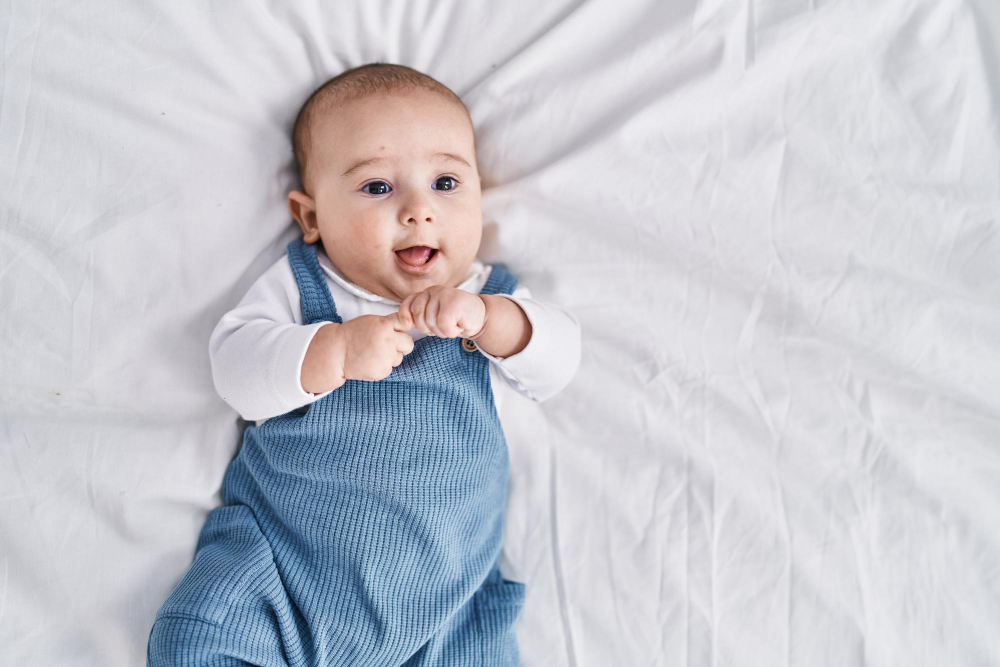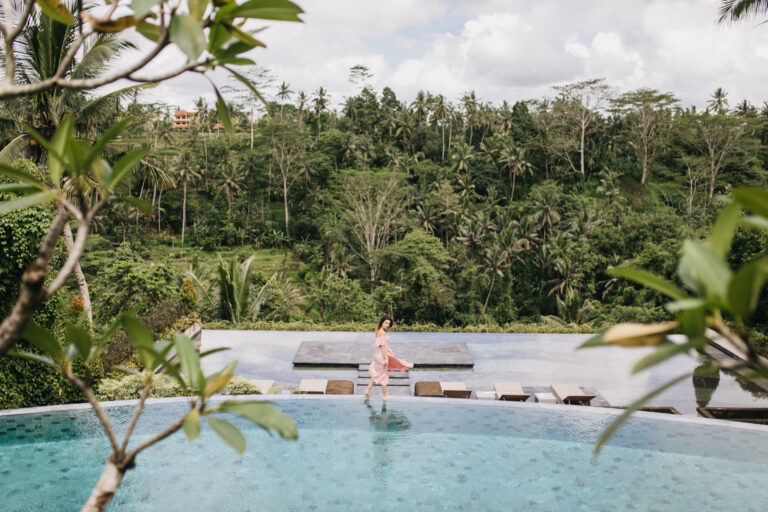Welcome to our guide on newborn photography. Capturing newborn photos is special, and choosing the right ISO setting matters a lot. A good ISO setting can make your baby shots stand out. We will explore how to use ISO for newborn photography. You will learn expert tips to capture those precious moments perfectly.
Key Takeaways:
- Choosing the right ISO setting is essential for capturing high-quality newborn photos.
- Understanding the basics of ISO and its role in the exposure triangle is crucial.
- ISO affects image quality and noise, so finding the optimal balance is essential.
- Different scenarios may require different ISO settings, so it’s crucial to be adaptable.
- Maximizing natural light and using lighting techniques can enhance your newborn portraits.
Understanding ISO in Photography
ISO is key to getting photos just right. It helps photographers control how bright or dark an image is. We’ll dive into what ISO means, why it matters for your photos, and how it works with other camera settings.
The Basics of ISO and Image Quality
ISO measures how sensitive a camera is to light. A higher ISO means the camera can capture brighter photos in dim settings. But, be careful. Using a high ISO can make your photos grainy.
It’s all about finding the perfect ISO. You want your photos bright enough without too much grain. The best ISO setting changes with the lighting around you.
ISO’s Role in the Exposure Triangle
ISO, aperture, and shutter speed make up the exposure triangle. They work together to light your photo perfectly. Changing the ISO setting helps fix lighting issues without messing with the other two.
Boosting the ISO makes your camera pick up more light. This lets you use faster shutter speeds or smaller apertures. Lowering the ISO does the opposite. It’s all about balance.
ISO and Its Impact on Image Noise
Image noise can make photos look grainy. High ISO settings usually increase this noise. It makes photos less sharp and detailed.
Finding the right ISO helps control noise. Sometimes, editing after taking the photo can also reduce noise. It’s about mixing the right ISO with good editing.
What is the Best ISO for Newborn Photography?
Choosing the right ISO for newborn photos is important. The ISO setting affects how sensitive your camera is to light. It helps you get the perfect shot and keeps the baby’s details clear.
There’s no single best ISO for baby pictures. It depends on the light, the mood you want, and your camera. But, there are tips and ideas to find the right ISO for your baby photos.
1. Assess the Lighting Conditions: Look at the natural or artificial light where you’re shooting. Is it bright or dim? Knowing this helps you choose the right ISO.
2. Aim for Low ISO in Well-Lit Settings: If it’s bright outside or in a room, use a low ISO from 100 to 400. This keeps your photos clear and free from noise.
3. Adjust ISO for Dimly Lit Environments: In darker places, you might need a higher ISO for good exposure. But, higher ISOs can make photos grainy. Try to find a good balance by trying different ISOs.
4. Use ISO Bracketing: If your camera can do ISO bracketing, use it. It takes several photos at different ISOs. This gives you choices for the best exposure later on.
5. Test and Experiment: Every camera and situation is different. Take test photos at different ISOs to see what looks best. Change the ISO until you’re happy with how your photos look.
Remember: The best ISO for baby pictures depends on your situation and what you want. Practice and trying different things will help you learn about ISO and improve your newborn photos.
Newborn Photography ISO Settings to Start With
Choosing the right ISO is key for high-quality newborn photos. We’ll discuss ideal ISO settings for baby portraits here. This includes settings for inside and outside photos, and for when it’s not very bright.
Indoor vs. Outdoor Settings
Indoor baby photos have steady light. Start with an ISO between 800 and 1600. This captures your baby’s soft details well without too much grain.
Outdoor photos use natural light, which changes. Keep your ISO at 200 to 400 in daylight to get clear shots. In shade or under clouds, you might need to turn the ISO up a bit.
ISO Recommendations for Dim Lighting
Dim light makes taking pictures of babies a bit tricky. For those moments, start with an ISO between 1600 and 3200. This helps avoid dark photos while keeping quality up. Remember, as ISO goes up, so does grain. Use noise reducing steps later to keep your photos looking great.
With low light, also look at your aperture and shutter speed. The right balance with ISO means sharp, stunning baby photos, even in tough light.
Use these ISO tips for inside and outside shots, and adjust in dim light. You’ll be able to take lovely baby photos that show off their tiny features and capture those special moments.
Best Camera Settings for Newborn Photography
Selecting the right camera settings is extremely important when capturing the precious moments of newborn babies. They help achieve stunning photos. ISO settings, aperture, shutter speed, and white balance are crucial. Let’s discuss these key settings.
Aperture
The aperture setting affects your photo’s depth of field. It lets you control how much of the background is blurred. For newborn shots, use a wide aperture between f/1.8 and f/3.5. This creates a soft look, focuses on the baby, and blurs the background gently.
Shutter Speed
Choosing the right shutter speed is key for newborn photography. Newborns can move unexpectedly. A fast shutter speed, like 1/250 sec, captures sharp images by freezing movement. But, if the baby is sleeping, a slower shutter speed may be better. It helps create a peaceful scene.
White Balance
White balance impacts the color tone of your photos. To get natural-looking images, it’s vital to set it right. If you shoot in RAW, you can adjust it later. Yet, aiming for accuracy while shooting saves time. For newborns, “Daylight” or “Auto” white balance settings are usually best.
These camera settings are just a starting point. Feel free to adjust based on your needs and the shooting environment. Through practice and patience, you’ll discover the perfect settings for capturing these little wonders.
Maximizing Natural Light for Beautiful Portraits
Natural light makes newborn photography magic. It helps create stunning, soft portraits that show the newness of life. To get the best from natural light, think about shooting during golden hours. Also, position your subject to catch the light well.
Timing Your Photoshoot: Golden Hours
The golden hours are right after sunrise or just before sunset. Light is softer and has a warm golden tone then. This light makes your subject look dreamy and flattering. It’s perfect for shooting newborns.
Plan to shoot early in the morning or late in the afternoon. The best time changes with location and seasons. Use a sunrise and sunset calculator to get the timing right.
Positioning Your Subject for Optimal Light
Once you hit the golden hours, position your baby well. As a photographer, you choose how to light the baby for the best effect.
Look for soft light that shows off their face well. Try different angles to see what looks best. But make sure the light is not too strong. Harsh light can make unflattering shadows.
Try placing your newborn near a window for soft, natural light. Play with the direction of the light to make your photos pop. Always think safety first with newborns. Use safe props and watch them closely.
Newborn Photography Lighting Tips
Light is key in newborn photography. It sets the mood and makes your baby photos lovely. Here are some tips for lighting that are just for newborn photos:
- Use Natural Light: Natural light is the best for newborn photos. Put your baby near a window or in a bright room. This uses soft, natural light that looks great on baby’s gentle features.
- Utilize Reflectors: Reflectors help change and direct light. Use a white or silver one to shine light on your baby’s face. This reduces shadows and makes the lighting even.
- Diffuse Harsh Light: Bright light doesn’t look good in newborn photos. Use a diffuser or sheer curtain. This makes the light soft and dreamy around the baby.
- Experiment with Artificial Light: Sometimes you need fake light. You can use softboxes, umbrellas, or LED panels. They make your lighting soft and natural-like.
- Avoid Harsh Shadows: We don’t want strong shadows in newborn photos. Make sure your lights are right to avoid them. Use a fill light or reflector to brighten dark spots.
- Consider the Color Temperature: The light’s color should match the room’s. You can change it later for a natural look.
- Create Depth with Backlighting: Backlighting makes a glow and depth in photos. Put your baby between the light and camera for a soft outline.
- Keep Safety a Priority: Make sure your lighting gear is safe and not close to the baby. The baby’s safety is always most important.
Use these lighting tips in your newborn photos. They will help you make beautiful pictures that capture these special early moments.
How to Set ISO for Newborn Photography in Challenging Lighting
In newborn photography, good lighting is key to getting beautiful photos. But sometimes, the light isn’t perfect. This section talks about how to set your camera’s ISO when the lighting is tricky. This way, you can still get great shots of these precious moments, even if the light isn’t ideal.
Dealing With Mixed Lighting Scenarios
If you’re dealing with a mix of natural and artificial light, things can get tricky. Here are some simple steps to help you:
- Start by taking a test shot with your camera’s normal settings. This helps you understand the lighting.
- Then, figure out which kind of light there is more of and adjust your ISO to match. Use a lower ISO for natural light, and a higher one for artificial light.
- Make sure your photo isn’t too dark or too bright. Play with the ISO, aperture, and shutter speed to get it just right. Keep testing different ISO settings to find the best look.
Adjusting ISO on the Fly
With newborns, the light can change fast. Here’s how to adjust your ISO as you go:
- Keep an eye on the light. Notice if the natural or artificial light changes as you’re shooting.
- Use your camera’s exposure meter. It tells you if the photo will be too bright or too dark with your current settings.
- Change your ISO slowly, not all at once. This keeps your photos looking consistent and reduces the chance of mistakes.
Using these tips, you can handle tough lighting and still take beautiful newborn pictures.
Capturing the Delicate Features of a Newborn: ISO Strategies
When photographing newborns, it’s vital to capture their delicate features perfectly. The correct ISO strategies help enhance details and textures in photos. By picking the right ISO setting, you can capture every tiny aspect of your newborn with clarity.
Using a low ISO setting is crucial for newborn photos. It keeps images clear with less noise, especially important for the baby’s skin, hair, and tiny fingers and toes. Try starting with an ISO between 100-400 for the best quality.
Natural light is also key for newborn portraits. It gives a soft look and helps keep details of the baby clear. Aim to shoot near a window or in a bright room during the day. Adjust the ISO as needed to get the perfect shot. Light from a window can create a soft and beautiful look, making the baby’s features stand out.
In low-light conditions, like in the evening, you might need to increase the ISO. But remember, a high ISO can add noise to photos. To deal with this, you can reduce noise during editing. This step helps keep your images clear.
Try out different ISO settings and see how they change your photos. Adjust your ISO based on the light to keep newborn features clear while reducing noise. This flexibility is key to great newborn photography.
Capturing newborns beautifully requires smart ISO use. With the right ISO settings, you can create stunning, timeless photos. These images will highlight the delicate beauty of your newborn subjects.
ISO for Baby Photography: Avoiding Common Pitfalls
When taking pictures of newborns, it’s vital to choose the right ISO setting. This helps you avoid too much light and get balanced photos. ISO for baby photography is key for stunning photos that show every detail of the baby. We will talk about common mistakes with ISO and how to fix them.
Avoiding Overexposure in Baby Photos
Overexposure is a common mistake in baby photography. It can make details fade and the photo look fake. To prevent this, pick the right ISO setting.
Always start with the lowest ISO to reduce noise and keep photos clear. But remember, in dim light, a low ISO might make photos too dark. Find a good ISO based on the light you have.
Also, watch the histogram when taking photos of babies. It shows if your photo is too bright. If the right side of the histogram is too high, lower your ISO or change the exposure settings.
Balancing ISO with Shutter Speed and Aperture
ISO must work well with shutter speed and aperture for perfect photos. This mix helps you take well-lit photos without losing quality.
For newborns, a quick shutter speed is needed to capture their tiny movements. But, this might make you increase the ISO due to less light. Try different shutter speed and ISO mixes to find what works best for you.
The aperture also matters for how your photo looks. A wide aperture (low f-stop) brings in more light, so you might not need a high ISO. But, it can make the background blur, which might be good or not based on what you want. Adjust aperture with ISO and shutter speed to get the right light and focus.
Capturing newborns needs attention to every little thing. By not overexposing and getting ISO, shutter speed, and aperture right, your photos will beautifully show the baby’s unique traits.
Post-Processing Tips for Managing ISO Noise
After you’ve taken those beautiful newborn pictures, it’s time for some editing magic. Photographers often encounter noise in their pictures when they use high ISO settings. But, by using certain editing tricks, you can reduce this noise. This improves your photos’ quality.
Here’s how to reduce ISO noise in your photos:
- Use Noise Reduction Software: Get noise reduction software like Adobe Lightroom, Topaz DeNoise, or DxO PhotoLab. These tools use advanced tech to decrease noise but keep details sharp.
- Apply Noise Reduction selectively: Instead of reducing noise on the whole picture, target noisy spots only. This keeps the baby’s skin and features looking natural and detailed.
- Adjust Luminance and Color Noise Reduction: Play around with the settings for both luminance and color noise. Finding the right balance is key. Too much noise reduction can make the photo look fake.
- Use Masking Techniques: Masking lets you apply noise reduction to just the areas that need it. This method maintains detail in the baby while making the background look smooth.
- Utilize Sharpening Filters: After reducing noise, use sharpening filters to bring back some texture and clarity. Different filters and settings can help make your photo pop.
With these editing tips, you can tackle ISO noise in your newborn pictures. This way, you’ll create stunning, high-quality photos that capture your tiny baby’s precious moments perfectly.
Lenses You Can Use for Newborn Photography
Getting the perfect newborn photos depends a lot on the lenses you use. The right lens affects the image quality, depth of field, and how versatile your shots can be. Here’s a look at some good lens choices for newborn photography:
- Prime Lenses: Many newborn photographers love using prime lenses. They have one fixed focal length, which means they can produce sharp, high-quality images. A 50mm prime lens is perfect for close-ups of the baby, like their small fingers and toes.
- Zoom Lenses: If you want flexibility, zoom lenses are the way to go. They let you change focal lengths without switching lenses. For newborn photography, a 24-70mm or 24-105mm zoom lens works well. They let you capture both wide shots and close-ups easily.
- Macro Lenses: To get really close and capture details like eyelashes and tiny lips, you’ll want a macro lens. These lenses are made for close-up photos. They’re super sharp and can catch even the tiniest details clearly.
When picking lenses for newborn photography, think about image quality, how the aperture works, and what focal lengths you prefer. It’s also smart to choose lenses from well-known brands. They’re known for their great optics and quality build.
Choosing the right lenses will help you capture every special moment clearly and in detail. This way, you’ll create beautiful memories that last forever.
Newborn Photography Camera Settings: A Holistic Approach
When it comes to capturing beautiful newborn photos, it’s important to take a holistic approach to camera settings. Two key factors to consider are aperture and shutter speed, which work in conjunction with ISO to achieve the desired image results.
Considering Aperture and Shutter Speed with ISO
Aperture refers to the size of the camera’s lens opening, which determines the amount of light that enters the camera. Selecting the right aperture setting not only affects the exposure but also the depth of field in the image. For newborn photography, a wider aperture (smaller f-stop number) is often ideal to create a soft, dreamy background and focus on the baby’s features.
Shutter speed, on the other hand, controls the duration of time that the camera’s sensor is exposed to light. It determines how sharp or blurry the motion in the image appears. To capture newborn moments without motion blur, it’s recommended to use a faster shutter speed. However, keep in mind that using a higher shutter speed may require a higher ISO setting to compensate for the reduced amount of light entering the camera.
When adjusting aperture and shutter speed, it’s important to consider the ISO setting as well. A higher ISO needs less light to produce a well-exposed image but may introduce more noise. Therefore, finding the right balance between aperture, shutter speed, and ISO is crucial for achieving the desired image quality.
Using Manual Mode vs Autoplay Mode
When it comes to camera modes, both manual and auto modes have their advantages and disadvantages for newborn photography. Manual mode gives you full control over the camera settings, allowing you to fine-tune the exposure according to your preferences. This mode is particularly useful when dealing with challenging lighting conditions or when you want to achieve a specific artistic effect.
Auto mode, on the other hand, automatically adjusts the camera settings based on the scene and lighting conditions. It can be convenient, especially for beginners or if you need to capture quick moments. However, keep in mind that auto mode might not always produce the desired results, especially in tricky lighting situations.
Ultimately, the choice between manual mode and auto mode depends on your photography skill level and the specific circumstances of the newborn shoot. It’s often a good idea to experiment with both modes and see which one suits your style and preferences best.
Conclusion
Choosing the right ISO setting is critical for amazing newborn photos. We’ve covered the basics of ISO, its role in the exposure triangle, and its impact on picture quality. So, what’s the ideal ISO for newborn photography? It varies, depending on factors like light and the effect you want.
For indoor photography, go for lower ISO settings. This reduces noise and gives you clear pictures. But for outdoor shots, you might need higher ISO levels to manage the natural light. Always be ready to adjust your ISO to match the lighting and prevent too much light in your photos.
Don’t forget about other camera settings like aperture, shutter speed, and white balance. They all work together to make your newborn photos look great. Try different settings to see what fits your style best.
Post-processing can also help with ISO noise and improve your photos. Use software and editing tricks to lessen noise and get professional results.
With these tips, you’re all set to improve your newborn photography. Remember, practice is key. Each photoshoot is a chance to get better and capture those precious early moments of a newborn’s life.
FAQ
What is the best ISO for newborn photography?
Finding the best ISO for newborn pictures depends on the light and what you want. Start with a low ISO, around 100 or 200, for the best quality and least noise. In darker places, you might need to up the ISO. The key is to get enough light but not too much noise.
How do I set the ISO for newborn photography?
To set the ISO, check your camera’s settings. In good light, start at ISO 100. For darker spots, increase it slowly to keep the picture bright without too much grain. High ISO can make pictures grainy, so find a good middle ground.
What camera settings should I use for newborn photography?
Besides ISO, think about your aperture and shutter speed. A wide aperture, like f/2.8, blurs the background and focuses on the baby. Use a fast shutter speed, 1/125 or more, to stop movement.
Also, set the white balance to Kelvin mode to get the colors right based on the light.
How can I maximize natural light for newborn portraits?
For beautiful, soft photos, use the natural light from sunrise or sunset. Put your baby near a window or in a shady spot outside to avoid strong shadows. Reflectors or white boards can help light up the baby’s face and reduce shadows.
How can I manage ISO noise in newborn photos?
To handle ISO noise, start with the lowest ISO that still gives you a clear photo. Shooting in RAW format gives you more control to reduce noise later. In editing software, use the noise reduction tool carefully to avoid losing detail in your pictures.
What types of lenses are recommended for newborn photography?
The right lens depends on your style and goals. Prime lenses with a wide aperture, like a 50mm f/1.8, are great for close, detailed shots. They make the background soft and dreamy. Zoom lenses, like a 24-70mm, let you change your shot without moving too much.





